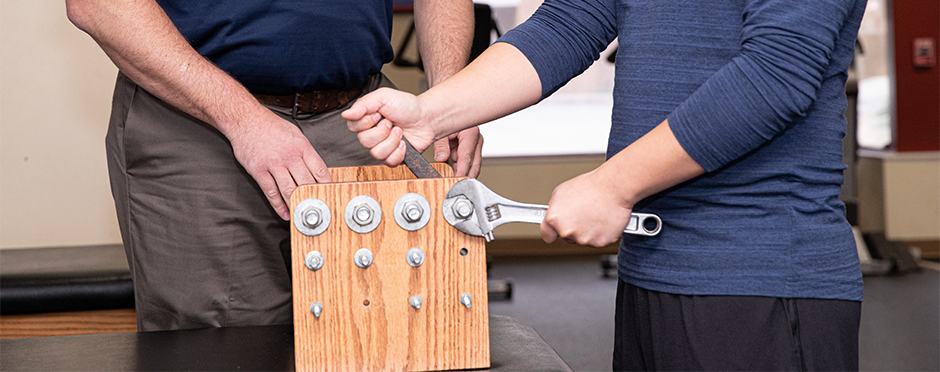
The Benefits of Work Conditioning Following Occupational Therapy
Leave a CommentCompleting an Occupational Therapy program for an upper extremity injury helps many individuals regain the skills and abilities to return to their jobs and daily activities. However, significant injuries will sometimes require additional time to improve endurance, strength, safety, and confidence to return to work. These select individuals may benefit from Work Conditioning, an individualized rehabilitation program created and overseen by a therapist and designed to help an injured worker cross the bridge between acute therapy and return to work.
When injuries require surgical repair or extensive therapy, it can increase the amount of time a worker is off from work. This time away from regular employment can potentially affect one’s muscular strength, cardiovascular endurance, and skilled performance. Cue the work conditioning! A job-specific work conditioning program is designed to simulate approximately one-half day of work as patients complete 4-5 hours of their custom program. Components of the program address endurance and strength by including exercises like walking, biking, and repetitive movements to prepare the body for specific work demands. The longer someone is off work due to an injury, the more they become a good candidate for a work conditioning program after their initial hand therapy.
Each job description presents its own unique set of challenges. An extended amount of time off from work can leave one’s performance a bit rusty. Participating in a work conditioning program allows one to go through the job-specific movements and demands to improve performance with said skills. Simulating work tasks also offer opportunities for a therapist to oversee and educate on body mechanics and ergonomics. Having an opportunity to re-learn job-specific skills with safe movement patterns before returning to the workplace will decrease the chances of re-injury and improve one’s confidence. Work conditioning is a great opportunity to re-master certain job-specific skills otherwise unable to be performed prior to returning.
Lastly, work conditioning offers great opportunities to regain the skills and independence needed for work. During the rehabilitation process, one’s level of independence might change due to physical dysfunction and role changes. A work conditioning program helps re-establish one’s behavior and role as a worker and regain the skills needed to complete job demands independently after an injury. Work conditioning offers a great avenue for individuals to improve physical and cognitive skills prior to returning to the workplace.
Get Started with Work Conditioning Today
Work conditioning should be on the radar for all injured workers to build confidence and avoid the possibility of extending care or incurring further injury. At Athletico, we offer programs that support the return to work of injured workers while decreasing their risk for further injuries. To learn more, please visit www.athletico.com/EmployerSolutions.
The Athletico blog is an educational resource written by Athletico employees. Athletico bloggers are licensed professionals who abide by the code of ethics outlined by their respective professional associations. The content published in this blog is for informational purposes only, does not constitute medical advice and should not be relied on for making personal health decisions.
